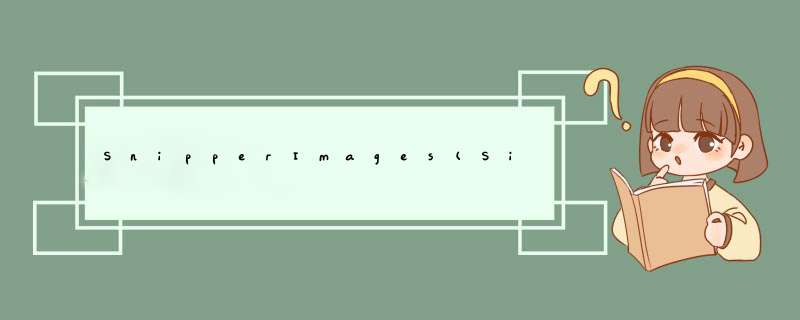
首先来看一下DEMO运行效果:
显示一张图片所使用的ui元素如下所示(其中之一):
< Path x:name ="leftimg3" stroke ="White" MouseleftbuttonDown ="OnimgClicked" >
Path.Data
PathGeometry
Pathfigure ="pathfigure_leftimg3" IsClosed ="True" StartPoint ="130,15"
linesegment ="line1_leftimg3" Point ="250,25" /> ="line2_leftimg3" ="line3_leftimg3" </ Pathfigure Path.Fill ImageBrush ="leftimg3Brush" Stretch ="Fill"
Path >
大家发现了,上面的内容只是可以正常显示一个图像(通过设置leftimg3Brush的ImageSource属性)而
在每一个图片下方都会有一个倒影效果,其使用的就是Scaletransform,其代码布局如下:
="left3Reflection" ="White"
="pathfigure_left3Reflection"
="line1_left3Reflection" ="line2_left3Reflection" ="line3_left3Reflection" ="leftReflection3Brush" ImageBrush.relativetransform transformGroup
<!-- 实现投影效果 --> Scaletransform ScaleX ="1" ScaleY ="-1" Translatetransform Y ImageBrush Path.OpacityMask linearGradIEntBrush StartPoint ="0.5,0" EndPoint linearGradIEntBrush.GradIEntStops GradIEntStop Offset ="0.0" color ="#2F000000" ="1.0" ="#00000000" linearGradIEntBrush >
而有关如何实现倒影效果可以参考 这篇文章。当然如果使用BLEND来制作倒影效果会更容易,但不知道为
什么,目前的BLEND还无法实现对子对象的属性设置(因为上面的XAML代码被放在了PATH对象中,而BLEND 在可视状态下只能看到PATH那一层的对象,而无法设置ImageBrush="leftReflection2Brush"这个对象)。
有了7个path对象加载图像(使用里面的ImageBrush的ImageSource属性)。还有7个path对象分别对应 实现7个图像的倒影效果。也就是下图中所显示的:
当然除此以外,还有2组PATH对象分别是:
lastimgBrush,lastReflectionBrush:用于当点击右侧导航按钮时,设置为当前分页下最右侧图像,以 避免出现图片为空(空框)的情况。
firstimgBrush,firstReflectionBrush:用于当点击左侧导航按钮时,设置为当前分页下最左侧图像,以
避免出现图片为空(空框)的情况。
有了这些静态的UI元素之后,我们还需要让其动起来,所以要用到StoryBoard(故事板)。而有关该内容
介绍可参见如下链接: 使用silverlight中的Storyboard实现动画效果
因为本DEMO中用的是PointAnimation(当动画值的变化[FROM ...TO...]类型是 Point型时使用),所以这
里直接就把相应的Xaml代码放在这里了,代码很简单。
首先是当点击右侧导航按钮时的Storyboard代码:
Code
<Storyboard x:name='flowForward' Completed='onForwardFlowCompleted'>
PointAnimation Storyboard.Targetname='pathfigure_centerimg' Storyboard.TargetProperty='StartPoint' From='250,15' To='330,5' Duration='0:0:0.5'/>='line1_centerimg'='Point'='370,25'='470,255);">='line2_centerimg'='line3_centerimg'
='pathfigure_centerReflection'='line1_centerReflection'='line2_centerReflection'='490,195'='line3_centerReflection'='310,255);">='pathfigure_rightimg1'='430,255);">='line1_rightimg1'='550,255);">='line2_rightimg1'='line3_rightimg1'='pathfigure_right1Reflection'='line1_right1Reflection'='line2_right1Reflection'='line3_right1Reflection'='pathfigure_rightimg2'='500,255);">='line1_rightimg2'='620,255);">='line2_rightimg2'='line3_rightimg2'='pathfigure_right2Reflection'='line1_right2Reflection'='line2_right2Reflection'='line3_right2Reflection'='pathfigure_rightimg3'='line1_rightimg3'='670,255);">='line2_rightimg3'='line3_rightimg3'='pathfigure_right3Reflection'='line1_right3Reflection'='line2_right3Reflection'='line3_right3Reflection'='pathfigure_leftimg1'='180,255);">='line1_leftimg1'='300,255);">='line2_leftimg1'='line3_leftimg1'='pathfigure_left1Reflection'='line1_left1Reflection'='line2_left1Reflection'='line3_left1Reflection'='pathfigure_leftimg2'='130,255);">='line1_leftimg2'='line2_leftimg2'='line3_leftimg2'='pathfigure_left2Reflection'='line1_left2Reflection'='line2_left2Reflection'='line3_left2Reflection'
</Storyboard>
然后是点击左侧导航时的StoryBoard代码:
Code
='flowBackward'='onBackwardFlowCompleted'='pathfigure_leftimg3'='line1_leftimg3'='line2_leftimg3'='line3_leftimg3'='pathfigure_left3Reflection'='line1_left3Reflection'='line2_left3Reflection'='line3_left3Reflection'>
上面的两块xaml代码分别 *** 作UI元素(注意只有六组,而不是七组,因为整体动态效果用六组PATH对象移动即可实现)。 注:目前无法在BLEND下对两个StoryBoard的运行效果进行设计测试,也就是之前BLEND截图中箭头所指示的 "No StoryBoard Open",造成这个问题的原因目前我还不大清楚,有兴趣的朋友不妨也帮助分析一下原因。
到这里,页面上的图象展示元素和StoryBoard就介绍完了,当然还有两个按钮控件(Repeatbutton类型)没有介绍,因为
其功能只是实现按钮事件触发Storyboard运行,而且有关button按钮控件的类继承关系及设计原理我之前已写过一篇文章作
了一些介绍,大家参考一下即可。
好了,xaml内容介绍完了,下面介绍一下CS代码,首先是事件参数声明(详细内容见注释):
/// <summary>
ImageSelector事件参数
</summary>
public class ImageSelectedEventArgs : EventArgs
{
当前选择的图片源信息
string Source;
当前选择的图片位图对象
BitmAPImage ImageSource;
}
然后是选择图片时的事件处理句柄(关于使用参见接下来的代码):
ImageSelected事件处理句柄
</summary> <param name="sender"></param> <param name="e"></param> delegate voID ImageSelectedEventHandler( object sender, ImageSelectedEventArgs e);
接着是控件的主体类了(详情见注释):
ImageSelector控件类
partial ImageSelector : UserControl
{
声明ImageSelected事件处理句柄的实例
event ImageSelectedEventHandler ImageSelected;
ImageSelector()
{
InitializeComponent();
// 图像刷数组初始化,用于绑定指定的BitmAPImage信息 imageBrushArray = new ImageBrush[ 7 ]; 7为当前页图片数 imageBrushArray[ 0 ] leftimg3Brush;
imageBrushArray[ 1 leftimg2Brush;
imageBrushArray[ 2 leftimg1Brush;
imageBrushArray[ 3 centerimgBrush;
imageBrushArray[ 4 rightimg1Brush;
imageBrushArray[ 5 rightimg2Brush;
imageBrushArray[ 6 rightimg3Brush;
“倒影效果”图像刷数组初始化,用于绑定指定的BitmAPImage信息 reflectionBrushArray reflectionBrushArray[ leftReflection3Brush;
reflectionBrushArray[ leftReflection2Brush;
reflectionBrushArray[ leftReflection1Brush;
reflectionBrushArray[ centerReflectionBrush;
reflectionBrushArray[ rightReflection1Brush;
reflectionBrushArray[ rightReflection2Brush;
reflectionBrushArray[ rightReflection3Brush;
绑定鼠标点击图片(外侧Path对象)后的事件 leftimg3.MouseleftbuttonDown += MousebuttonEventHandler(OnimgClicked);
leftimg2.MouseleftbuttonDown MousebuttonEventHandler(OnimgClicked);
leftimg1.MouseleftbuttonDown MousebuttonEventHandler(OnimgClicked);
rightimg3.MouseleftbuttonDown MousebuttonEventHandler(OnimgClicked);
rightimg2.MouseleftbuttonDown MousebuttonEventHandler(OnimgClicked);
rightimg1.MouseleftbuttonDown MousebuttonEventHandler(OnimgClicked);
centerimg.MouseleftbuttonDown MousebuttonEventHandler(OnimgClicked);
}
定义图像点击事件
OnimgClicked( ImageSelectedEventArgs();
设置事件参数 args.ImageSource ((Path)sender).Fill.GetValue(ImageBrush.ImageSourceProperty) as BitmAPImage;
调用图片选择事件 OnImageSelected(args);
}
定义图片选择事件
protected OnImageSelected(ImageSelectedEventArgs e)
{
if (ImageSelected != null )
{
调用绑定的处理事件代码 ImageSelected( this , e);
}
}
实始化图像数组并绑定相应的图像Brush
<param name="imageUris"> 图片路径信息 </param> Setimages( [] imageUris)
{
imageArray imageUris;
(imageArray.Length >= 设置当前显示的图片数组的左起索引数 imageIndex ;
绑定相应的图像Brush UpdateImages();
}
}
定义“flowForward(前进)”对象(Storyboard类型) 的Completed处理事件
onForwardFlowCompleted( 当storyboard动画效果完成时置为NulL firstimgBrush.ImageSource ;
lastimgBrush.ImageSource ;
firstReflectionBrush.ImageSource ;
lastReflectionBrush.ImageSource ;
}
定义“flowBackward(后退)”对象(Storyboard类型) 的Completed处理事件
onBackwardFlowCompleted( “后退”按钮点击事件
btnBack_Click( (imageIndex - 更新最左侧图像刷和“倒影”对象,使其在下面storyboard运动过程中逐渐被遮盖
firstimgBrush.ImageSource = new BitmAPImage( Uri(imageArray[imageIndex], UriKind.relativeOrabsolute)); firstReflectionBrush.ImageSource UriKind.relativeOrabsolute));
注:后退方向与我们通常认为的方向相反(通常是imageIndex--),这块不知道是作者的疏忽还是别的原因 imageIndex ++ == imageArray.Length)
{
imageIndex ;
}
UpdateImages();
运行"后退"storyboard效果 flowBackward.Begin();
}
}
“前进”按钮点击事件
btnForward_Click( 更新最右侧图像刷和“倒影”对象,使其在下面storyboard运动过程中逐渐被遮盖 lastimgBrush.ImageSource Uri(imageArray[(imageIndex + 6 ) % imageArray.Length], UriKind.relativeOrabsolute)); lastReflectionBrush.ImageSource 注:前进方向与我们通常认为方向相反(通常是imageIndex++),这块不知道是作者的疏忽还是别的原因 -- < )
{
imageIndex imageArray.Length - 运行"前进"storyboard效果 flowForward.Begin();
}
}
绑定相应的图像Brush
UpdateImages()
{
int brushIndex imageIndex;
for ( i ; i ; i 加载图像信息 imageBrushArray[i].ImageSource Uri(imageArray[brushIndex], reflectionBrushArray[i].ImageSource UriKind.relativeOrabsolute)); brushIndex 当到达最大长度时,则清零(回到起始位置,实现循环效果) (brushIndex imageArray.Length)
{
brushIndex ;
}
}
}
图像刷数组用于绑定(显示)指定的BitmAPImage信息
private ImageBrush[] imageBrushArray;
"倒影"效果图像刷数组
ImageBrush[] reflectionBrushArray;
图片路径信息数组
[] imageArray;
当前显示的图片数组的左起索引数
imageIndex ;
}
上面的控件类主要是实现了初始化属性成员(图片数组)和相应UI元素事件的绑定(MouseleftbuttonDown),
然后是相应的事件处理代码(前进,后退按钮事件)。当然在实现上我个人认为还有一些问题(在注释中已说明)。
但总体上代码布局还是很清爽的。
下面即是本文开头DEMO页面的xaml代码(源码包中的Page3.xaml):
Code
<!--控件声明-->
ctl:ImageSelector ='imageSelector' ImageSelected='OnImageSelected' Canvas.top='400' Loaded='imageSelector_Loaded'当用户点某一图片时显示元素InkPresenter ="snipCanvas" Background="#80F5F5DC" Opacity="0" Canvas.left="100"="70" WIDth="600" Height="430" Cursor="Hand"
InkPresenter.Resources
="snipCanvasFadeIn"
DoubleAnimation ="Opacity"="0.0"="1.0"="snipCanvasScale"="ScaleX"="ScaleY"="snipCanvasFadeOut"InkPresenter.RendertransformScaletransform ScaleX ScaleY CenterX="300" CenterY="215"
Canvas Canvas.left="577"="3"="20"="Crimson" MouseleftbuttonUp="onExitMouseUp"line X1="4" Y1 X2="16" Y2 stroke="White" strokeThickness CanvasImage ="snipImage"="10"="40"
WIDth="580"="380" Stretch="Uniform"
InkPresenter>
而相应的CS代码如下所示:
imageSelector_Loaded( baseUri Application.Current.Host.source.absoluteUri.Substring( " / " ));
初始化设置图片链接数组 imageSelector.Setimages( []
{
String.Concat(baseUri, /../Images/1.jpg ),
String.Concat(baseUri,0);">/../Images/2.jpg /../Images/3.jpg /../Images/4.jpg /../Images/5.jpg /../Images/6.jpg /../Images/7.jpg /../Images/8.jpg )
});
}
OnImageSelected( 当选择某一图片时,放大显示 snipCanvas.Cursor Cursors.Hand;
snipCanvasFadeIn.Begin();
snipImage.SetValue(Image.sourceProperty, e.ImageSource);
}
onExitMouseUp( 当点击关闭时 snipCanvasFadeOut.Begin();
}
上面代码中的OnImageSelected用于单击某张图片时放大显示,如下图:
好了,今天的内容就先到这里了。
tag:silverlight,imageselector,imagesnipper
作者:代震军,daizhj
原文链接:[url]http://www.cnblogs.com/daizhj/archive/2008/09/10/1288315.HTML[/url]
源码下载,请 点击这里:) 总结
以上是内存溢出为你收集整理的SnipperImages(Silverlight DEMO)控件设计之--ImageSelector全部内容,希望文章能够帮你解决SnipperImages(Silverlight DEMO)控件设计之--ImageSelector所遇到的程序开发问题。
如果觉得内存溢出网站内容还不错,欢迎将内存溢出网站推荐给程序员好友。
欢迎分享,转载请注明来源:内存溢出

 微信扫一扫
微信扫一扫
 支付宝扫一扫
支付宝扫一扫
评论列表(0条)